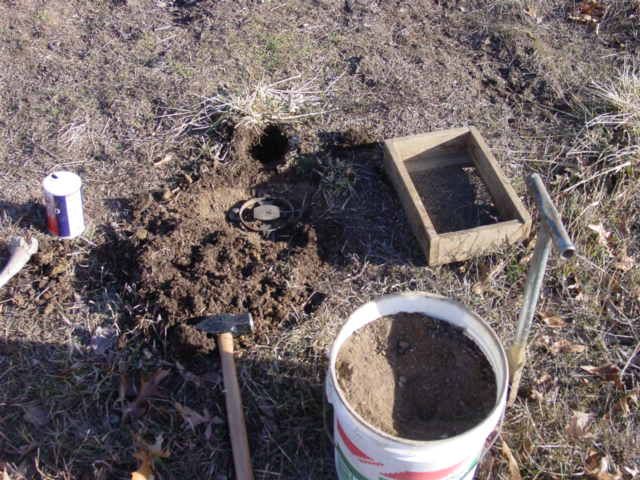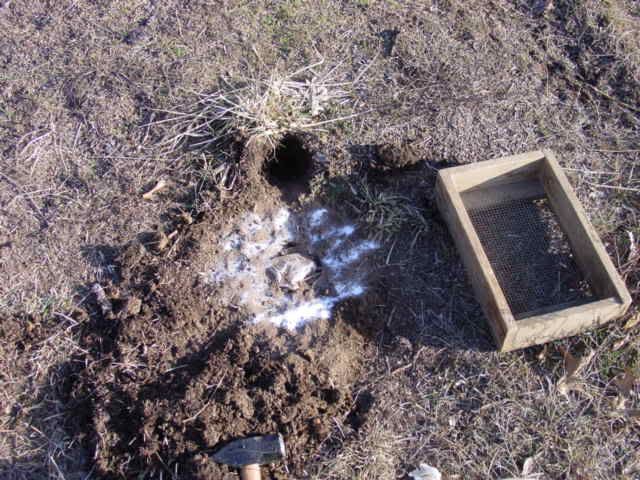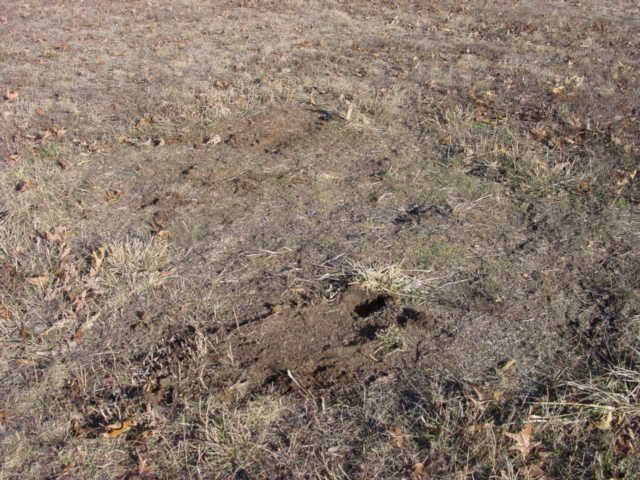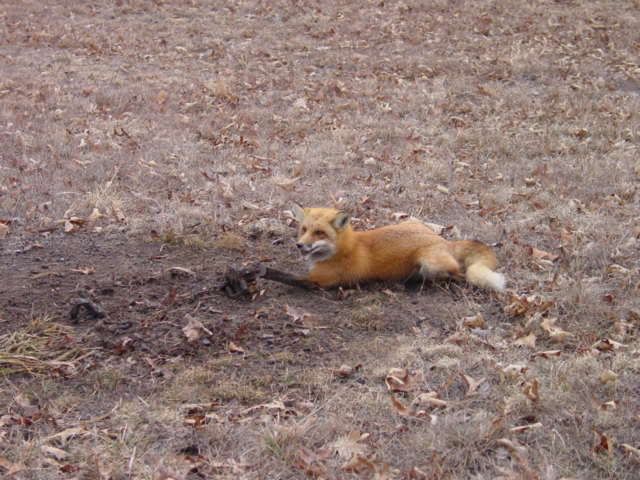You are using an out of date browser. It may not display this or other websites correctly.
You should upgrade or use an alternative browser.
You should upgrade or use an alternative browser.
just started traping what do i need to know
- Thread starter derickd
- Start date
ColoradoAlan
New member
Well, to help you out you might consider telling us what you are trapping for and what equipment you have.
Originally Posted By: derickdi guess bobcats foxes and yotes dukes 2 and 3 s i really dont know much about this type stuff
Since it seems like you are in North Carolina, I suggest you start with the North Carolina Trappers Association . Each area presents different challenges to trapping and these folks know your area and how the species you want to trap behave there.
As for the traps themselves, the Dukes you mention will do fine for all three species you list.
Also, I would suggest getting some DVD's and books associated with your trapping. F&T fur harvesters has quite a few of those...
Since it seems like you are in North Carolina, I suggest you start with the North Carolina Trappers Association . Each area presents different challenges to trapping and these folks know your area and how the species you want to trap behave there.
As for the traps themselves, the Dukes you mention will do fine for all three species you list.
Also, I would suggest getting some DVD's and books associated with your trapping. F&T fur harvesters has quite a few of those...
Jesse lackey
New member
Derickd, i know it seems like nobody wants to help you here, but the truth of the matter is that you are asking such a broad question here that a guy could type three pages and not even scratch the surface. Do some research, maybe watch some youtube videos, figure out what type of sets you want to try then start asking questions to try to narrow it down some.
Devin69
New member
I have some great Bobcat trapping DVD's in the classifieds
http://www.predatormastersforums.com/for...383#Post2405383
http://www.predatormastersforums.com/for...383#Post2405383
Jesse lackey
New member
Well, maybe we can get some good info rolling here. Hopefully some others will pick up where i leave off.
The first thing you have to do is get those traps ready to go in the ground. You will need to adjust the pan so it sits flat, level with the jaws, and the pan tension. Start by leveling the pan. You will want to set the trap, and decide weather the pan needs moved up or down. Once you figure that part out trip the trap and with a pair of pliers bend the piece of metal that holds the dog a little at a time. Re set and check. If you need more just bend a little more until it is level. Once it is level try to trigger the trap to make sure there is plenty of travel. Also, duke pans have a problem with having oversized holes that the bolt goes through. This can cause the pan to slide in and out, if your traps do then you will want the pan pulled away from the dog as far as it can for this process, and when you set it in the field. If it is pushed toward the dog, you will get tons of pan travel, and poor catches if not misses.
Now that the pan is level its time to set the tension. If you plan on trying for fox as well as coyotes i would shoot for two pounds of pan tension. Get yourself something weighing two pounds, set the trap so the pan is level, and set the weight on the pan. You want the pan to just barely hold the weight. To adjust the pan tension tighten or loosen the nut on the bolt holding the pan in place. A little goes a long ways here so dont get crazy. Little turns at a time and check with the weight.
Now if you did everything right, when the trap is set the dog should barely be setting on the notch in the pan. It should not sit up higher than the jaws when looking from the side. It should barely hold two pounds of weight, but when it does go the pan should travel no more than a quorter to half inch before the trap fires. Nice crisp break on the trigger, kindof like a fine tuned rifle trigger. Pan travel is not your friend.
So your traps are tuned up, and you are happy. Now its time to clean them up. If you have a dish washer throw rhe traps in the dishwasher with the dish detergent you use for normal dishes. This will get off any grease on them. If no dishwasher like me, i fill the sink with hot watter and add a generous amount of dawn. The grease fighting stuff. Throw the traps in and let them soak. I like to stirr them around every ten min for about an hour. They should now be clean. Rinse with hot water, then in clean sink mix water and viniger. Probably about half a cup per gallon if i had to say. I just kindof guess. I like this water hot as well. Dip the traps in for about ten min then pull them out, set them on a towl and let them dry. Repeat this eight or ten times and you should see a light rust starting to form. Once the entire trap has a light coating of rust rince them well in clean hot water to get all the viniger off. If you want to die them now is the time, if not, which i do not dye my yote traps, then simply hang them outside and they are ready to go in the ground.
If you didnt understand any of that or just need more info just ask. If any of you other guys see i missed something please speak up.
Hopefully someone will step in here and start with some info on sets, lures, and setting the traps. If not i will type some more tomorrow, but i have had enough typing for tonight.
Come on guys, pitch in here, this could be a really great thread and help a lot of people out!
The first thing you have to do is get those traps ready to go in the ground. You will need to adjust the pan so it sits flat, level with the jaws, and the pan tension. Start by leveling the pan. You will want to set the trap, and decide weather the pan needs moved up or down. Once you figure that part out trip the trap and with a pair of pliers bend the piece of metal that holds the dog a little at a time. Re set and check. If you need more just bend a little more until it is level. Once it is level try to trigger the trap to make sure there is plenty of travel. Also, duke pans have a problem with having oversized holes that the bolt goes through. This can cause the pan to slide in and out, if your traps do then you will want the pan pulled away from the dog as far as it can for this process, and when you set it in the field. If it is pushed toward the dog, you will get tons of pan travel, and poor catches if not misses.
Now that the pan is level its time to set the tension. If you plan on trying for fox as well as coyotes i would shoot for two pounds of pan tension. Get yourself something weighing two pounds, set the trap so the pan is level, and set the weight on the pan. You want the pan to just barely hold the weight. To adjust the pan tension tighten or loosen the nut on the bolt holding the pan in place. A little goes a long ways here so dont get crazy. Little turns at a time and check with the weight.
Now if you did everything right, when the trap is set the dog should barely be setting on the notch in the pan. It should not sit up higher than the jaws when looking from the side. It should barely hold two pounds of weight, but when it does go the pan should travel no more than a quorter to half inch before the trap fires. Nice crisp break on the trigger, kindof like a fine tuned rifle trigger. Pan travel is not your friend.
So your traps are tuned up, and you are happy. Now its time to clean them up. If you have a dish washer throw rhe traps in the dishwasher with the dish detergent you use for normal dishes. This will get off any grease on them. If no dishwasher like me, i fill the sink with hot watter and add a generous amount of dawn. The grease fighting stuff. Throw the traps in and let them soak. I like to stirr them around every ten min for about an hour. They should now be clean. Rinse with hot water, then in clean sink mix water and viniger. Probably about half a cup per gallon if i had to say. I just kindof guess. I like this water hot as well. Dip the traps in for about ten min then pull them out, set them on a towl and let them dry. Repeat this eight or ten times and you should see a light rust starting to form. Once the entire trap has a light coating of rust rince them well in clean hot water to get all the viniger off. If you want to die them now is the time, if not, which i do not dye my yote traps, then simply hang them outside and they are ready to go in the ground.
If you didnt understand any of that or just need more info just ask. If any of you other guys see i missed something please speak up.
Hopefully someone will step in here and start with some info on sets, lures, and setting the traps. If not i will type some more tomorrow, but i have had enough typing for tonight.
Come on guys, pitch in here, this could be a really great thread and help a lot of people out!
Jesse lackey
New member
Ok, guess its just me here.
The next step is going to be getting your traps in the ground. For a beginner a dirt hole set would probably be the best. I lime to find natural locations where there is a small step in the ground. Almost like a tiny bank. About three to four inches works best for me. Dig a hole angeling down and away from where your trap will be. You can play with different hole sizes, but i like about a two inch diameter hole atleast six inches deep. Once you have your hole dug you want to dig your trap bed. I like to make mine so its almost a cookie cutter of the trap. Try not to disturb any more soil than needed. Make the bed about two inches deeper than the depth of your trap. Set your trap and anchor it in the bed. Then sift some dirt in the bottom of the bed, about an inch or so. Now press your trap into the bed. I like to have the dog at about the three o'clock position. Now lift the free jaw up and lay a cover over the pan, then fold the jaw back down. Now sift more dirt over the trap. Sift a little and pack dirt around it. Sift some more then pack. Make sure you keep the dirt brushed off the pan so you know where it is.
You want the trap packed in tight. You should be able to push on the jaws and not have any wiggle. Once you are happy sift some more dirt over it and pack down good. Your pan should have about a half of an inch of dirt over it, and be the lowest part of the set by about a half to a quorter of an inch. Now i like to sift a tiny bit of dirt over the whole thing to make it look natural.
Now time for bait. I like to use some tainted meat in the hole. Make sure its all the way down in the hole. Then on one side of the hole about five to six inches away i poke a small hole with a stick or stake. Then dip a twig in some gland lure, or beaver castor and stick it down in the hole. Last is backing. I like to use something natural. If you are close to a corn field use a corn cob. If by pine trees use a pine cone. Hardwoods use a stick. Set it just behind the rim of the hole. Then spray a little fox urine on it and you are good to go. I will add some pics in a few min.
The next step is going to be getting your traps in the ground. For a beginner a dirt hole set would probably be the best. I lime to find natural locations where there is a small step in the ground. Almost like a tiny bank. About three to four inches works best for me. Dig a hole angeling down and away from where your trap will be. You can play with different hole sizes, but i like about a two inch diameter hole atleast six inches deep. Once you have your hole dug you want to dig your trap bed. I like to make mine so its almost a cookie cutter of the trap. Try not to disturb any more soil than needed. Make the bed about two inches deeper than the depth of your trap. Set your trap and anchor it in the bed. Then sift some dirt in the bottom of the bed, about an inch or so. Now press your trap into the bed. I like to have the dog at about the three o'clock position. Now lift the free jaw up and lay a cover over the pan, then fold the jaw back down. Now sift more dirt over the trap. Sift a little and pack dirt around it. Sift some more then pack. Make sure you keep the dirt brushed off the pan so you know where it is.
You want the trap packed in tight. You should be able to push on the jaws and not have any wiggle. Once you are happy sift some more dirt over it and pack down good. Your pan should have about a half of an inch of dirt over it, and be the lowest part of the set by about a half to a quorter of an inch. Now i like to sift a tiny bit of dirt over the whole thing to make it look natural.
Now time for bait. I like to use some tainted meat in the hole. Make sure its all the way down in the hole. Then on one side of the hole about five to six inches away i poke a small hole with a stick or stake. Then dip a twig in some gland lure, or beaver castor and stick it down in the hole. Last is backing. I like to use something natural. If you are close to a corn field use a corn cob. If by pine trees use a pine cone. Hardwoods use a stick. Set it just behind the rim of the hole. Then spray a little fox urine on it and you are good to go. I will add some pics in a few min.
Jesse lackey
New member
Here are some of my sets. On a dirthole i like to keep everything as natural and well blended as possible. I also like to use any natural pre existing locations as i can. The fox and coyotes were running right down the side of this pipe, and sticking nose in every open end so i made a set and threw a pheasant carcass in the pipe.
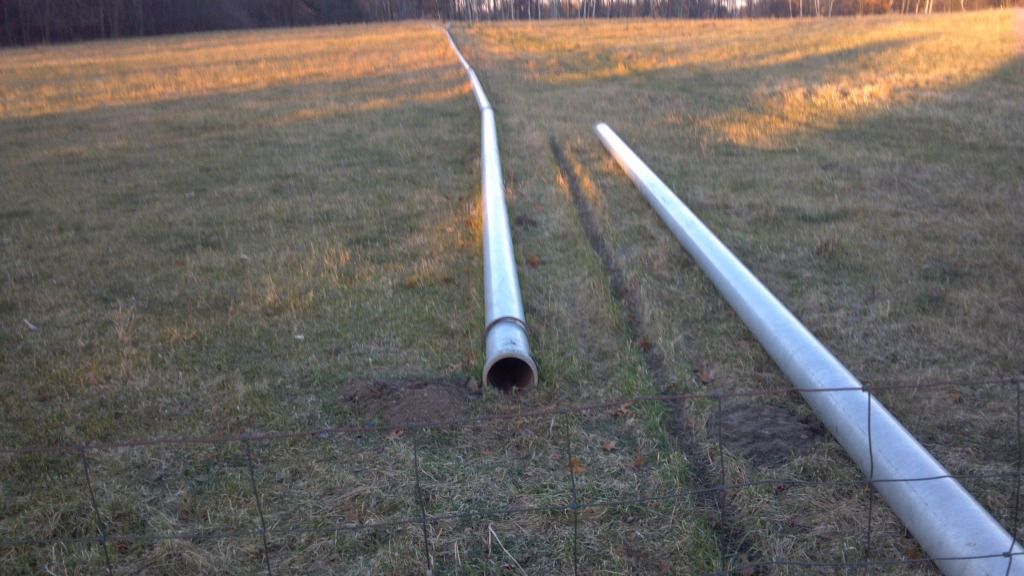
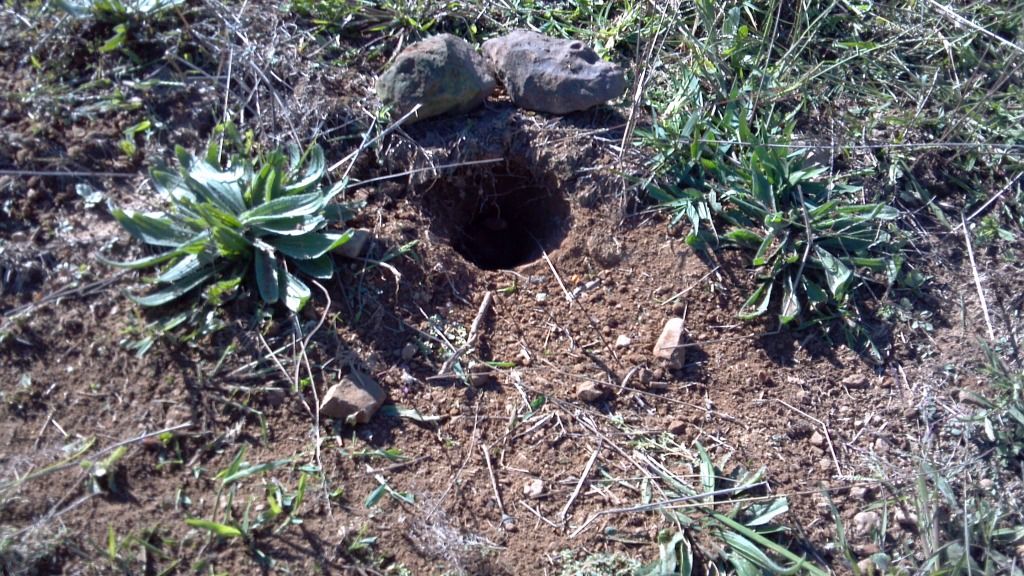
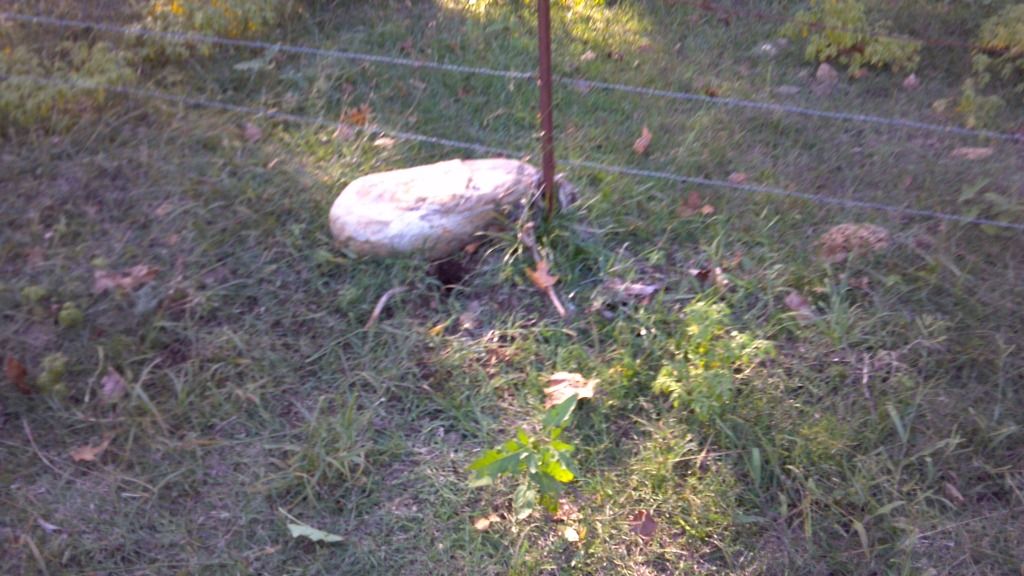

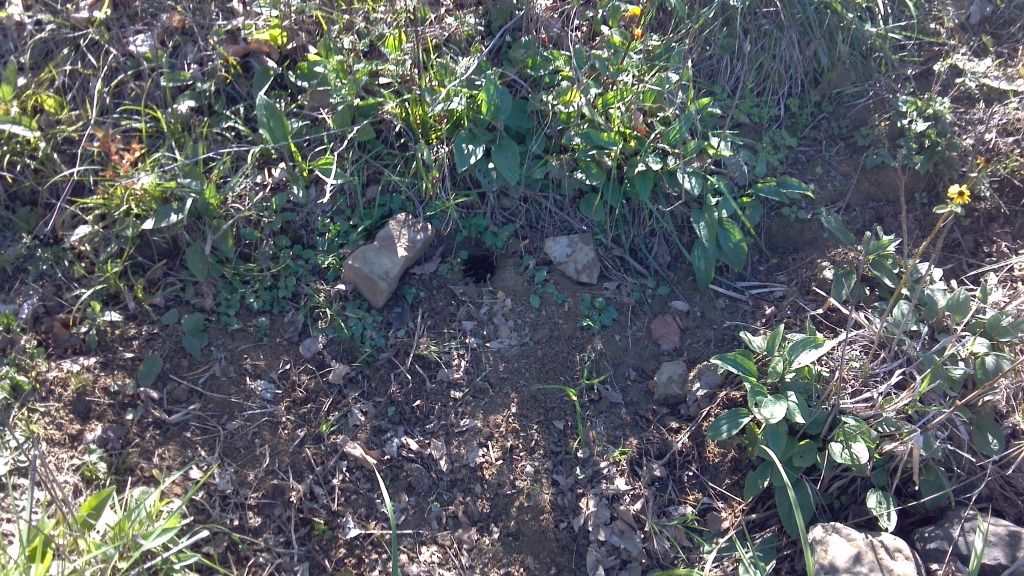
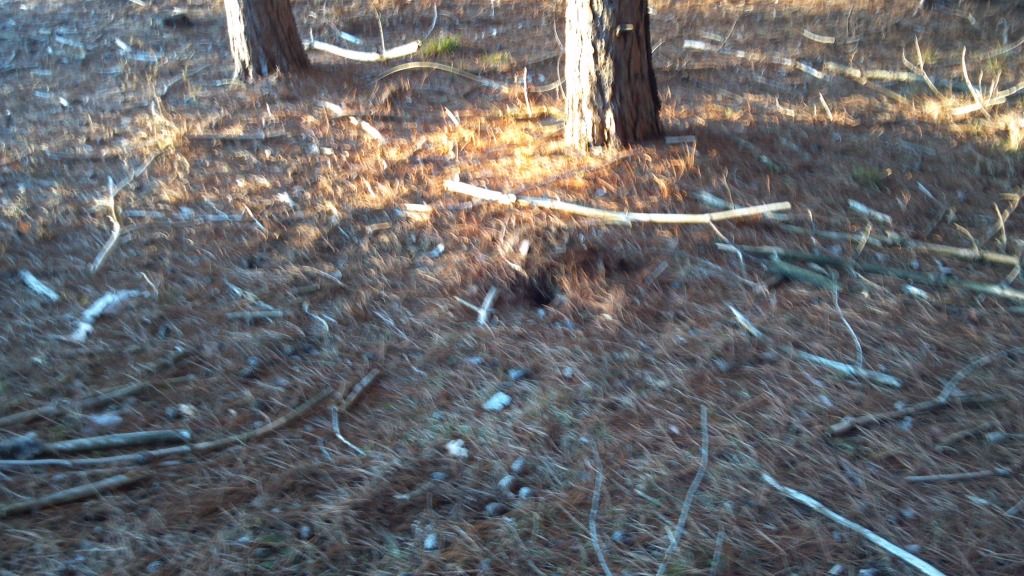
Jesse lackey
New member
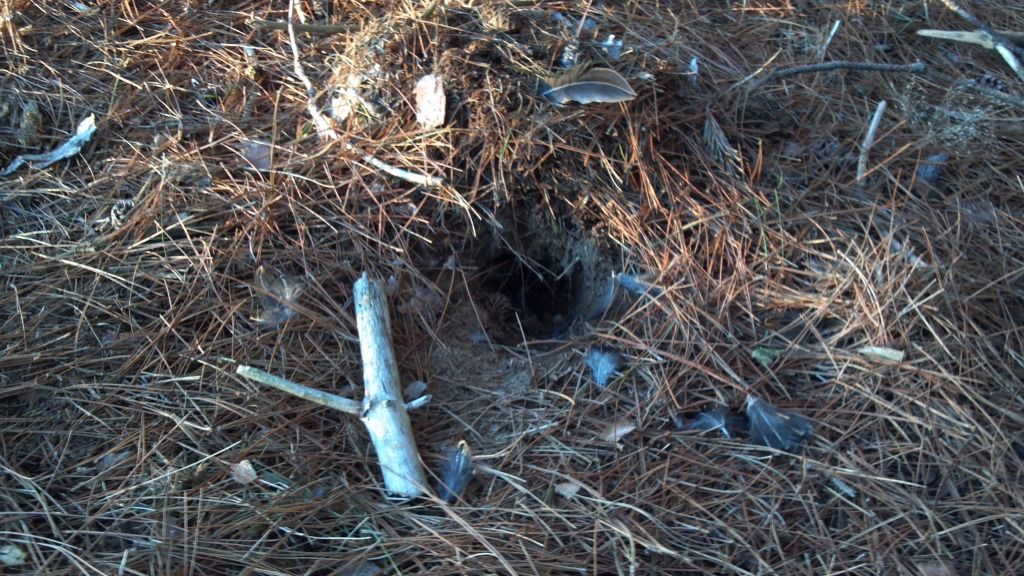
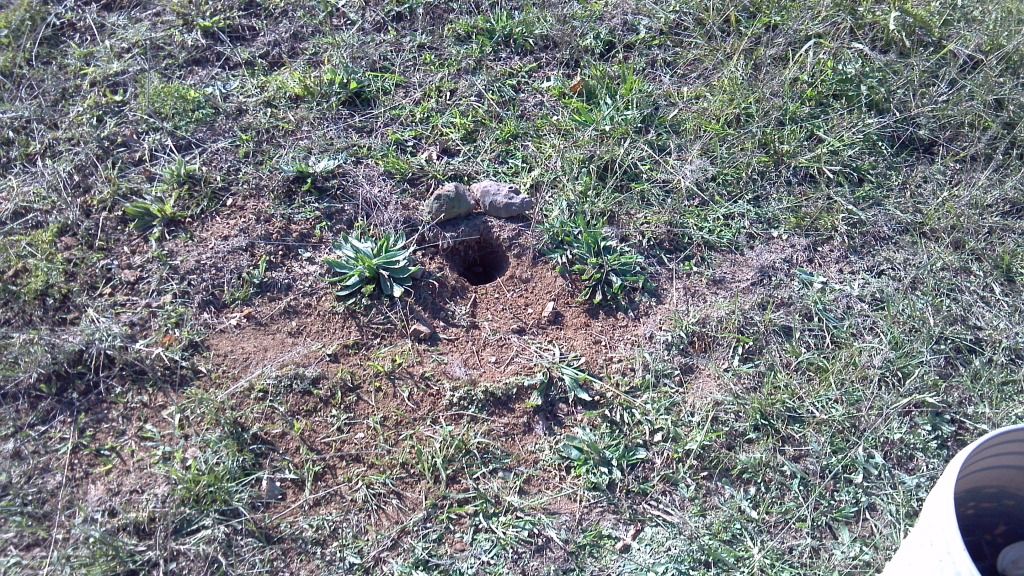
Last edited:
Jesse lackey
New member
Oh yeah, also i like to place my trap so the pan is about six inches from the hole and two inches to the right
thanks guys i think i got some good tips there the sets are great i just hope mine look half that good i really want a bobcat to mount thats why i really want to learn this and my son really want it to but at 9 yrs old he might be alittle young to do it alone so this is something we can do together thanks guys for your insight and tips
Pa. Mick
Well-known member
I always coated my traps. Some guys boil and wax them. I have always used Andy Stowes speed dip which is a mix of speed dip and gasoline. My belief is if that canine smells rust he will dig up that trap. One thing I used will really help you is take a clean tuna fish can and install about a 8" long handle. Drill a 1/8" hole about center of the can. I used a piece of 11/2"x11/2" x 8" wood for handle. Run the screw from the inside of the can up into the handle. Now take tin snips and cut a notch out of the side of the can about 1/2" wide the height of the can. When your trap is set and placed in the dirt hole place this fancy cheap tool you just made over the trap pan the notch in it goes over the trap dog. This tool will allow you to pack dirt under your trap jaws solidly without catching your fingers if the trap fires while setting. If the trap rocks or moves even a little the predator will dig or flip that trap ! After you bed the trap in dirt you should be able to push down on the jaws anywhere and that trap should not move !!!!! I bought the plastic version of this tool and it shattered the first time a trap sprung on it. I also shorten my trap chains to about 8" and install swivels you can get for your traps, I think mine swivel at the trap and at 4" on the chain and at the stake. If you have coyote around you might have to crisscross your stakes ( double stake) your traps. I always used earth anchors but I trap in clay soil. Shorter trap chain helps prevent lunging and jumping that the animals do. Remember, kids that hunt, trap and fish don't mug little old ladies. Have fun and good luck. Mick
Jesse lackey
New member
Dirthole sets will work fine for cats. If thats your main target i would use more guiding. Give the cat one place to put his foot. That place being your pan. Also some visual attractors. Feathers in and around the hole work well.



